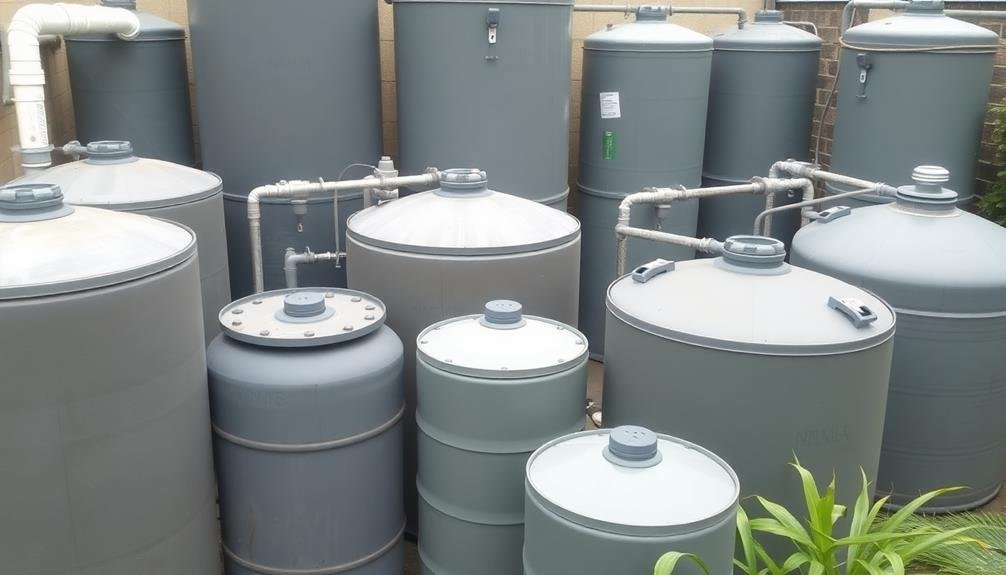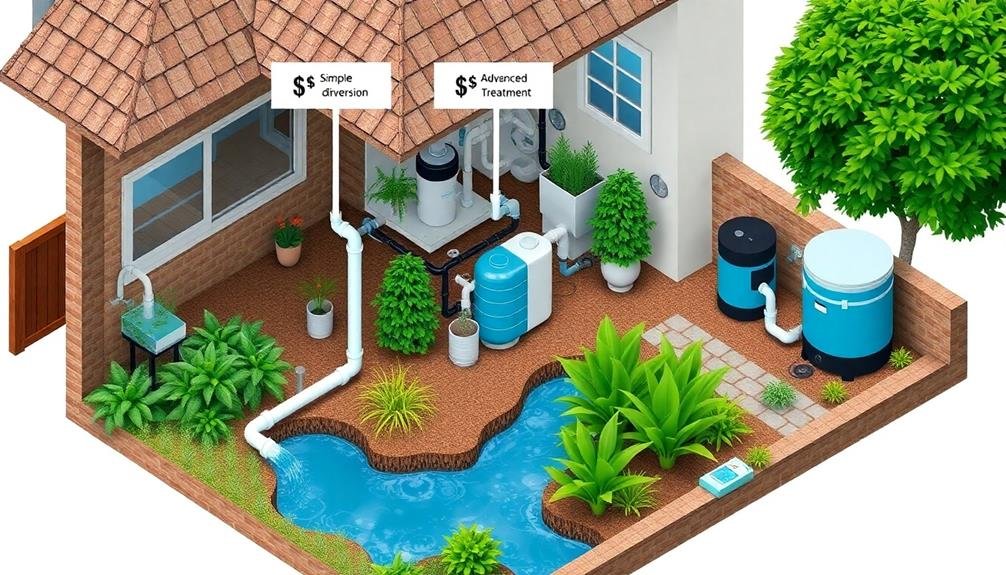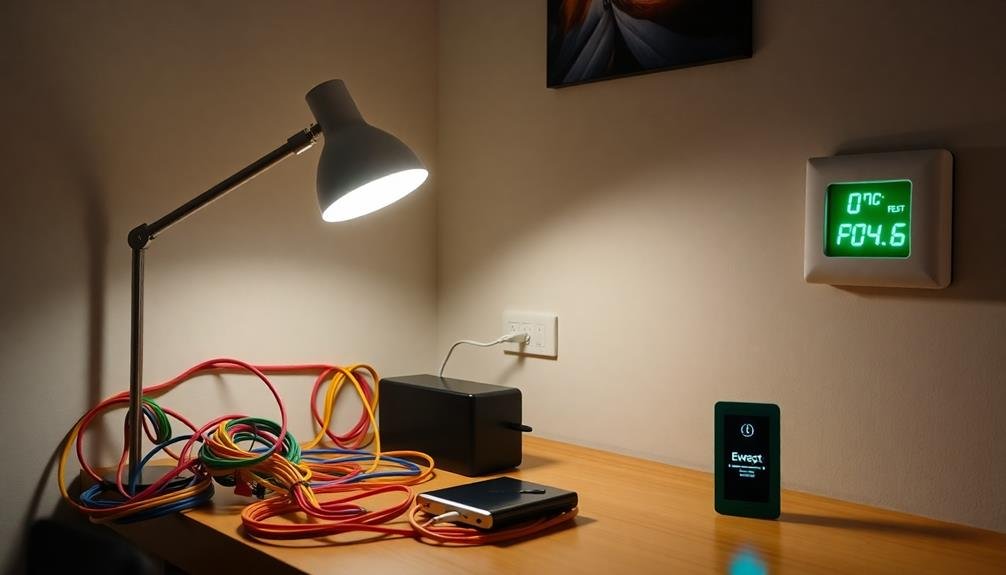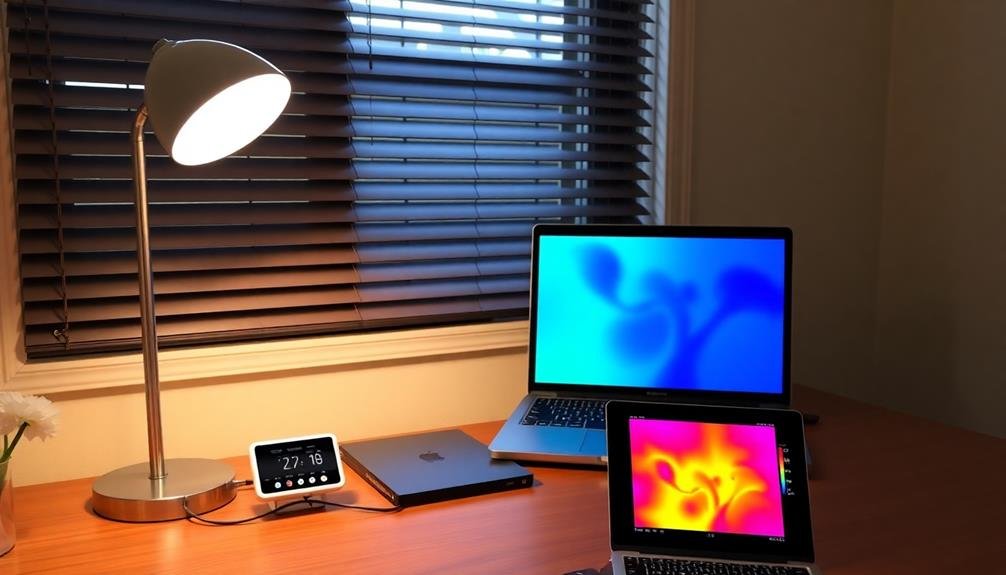Greywater systems come with a wide range of price tags to fit various budgets and needs. You'll find simple bucket collection setups for as little as $10, while laundry-to-landscape diversion methods can cost $150 to $3,000. Branched drain systems typically run $500 to $2,000, and pumped distribution networks may set you back $1,000 to $5,000. For larger-scale solutions, constructed wetlands range from $5,000 to $10,000, and high-tech treatment units start at $3,000 but can exceed $10,000. Don't forget to factor in storage tank costs, which vary based on size and material. Exploring each option in detail can help you make the best choice for your home and wallet.
Simple Bucket Collection Systems

Thrifty homeowners can start their greywater journey with a simple bucket collection system. This basic approach involves placing buckets or containers under your sinks to catch greywater from hand washing, dishwashing, or other household activities.
You'll then manually transport this water to your garden or outdoor plants for irrigation.
The cost for a bucket system is minimal, typically ranging from $10 to $50. You'll need one or more large buckets, which you can purchase at most hardware stores for $5 to $20 each.
For added convenience, consider investing in a wheeled bucket or garden cart, costing between $20 and $50, to make transporting water easier.
While this method is cost-effective, it requires consistent effort and physical labor. You'll need to empty buckets regularly to prevent stagnant water and potential odors.
It's also important to use biodegradable, phosphate-free soaps and detergents to guarantee the greywater is safe for your plants.
Despite its limitations, a bucket collection system offers an accessible entry point for greywater recycling, allowing you to reduce water consumption and nurture your garden simultaneously.
Laundry-to-Landscape Diversion Methods
Laundry-to-landscape systems frequently offer an efficient step up from bucket collection methods. These setups divert greywater from your washing machine directly to your garden, eliminating the need for manual transport.
You'll typically spend between $150 to $300 for a basic DIY kit, which includes a three-way valve, irrigation tubing, and mulch basins.
If you're not comfortable with DIY installation, professional setup can cost $700 to $2,000. This price often includes labor, additional materials, and system optimization for your specific landscape. The exact cost depends on factors like yard size, soil type, and local regulations.
You'll need to contemplate ongoing maintenance costs, which are generally low. Regular cleaning of filters and occasional inspection of irrigation lines are essential.
Some homeowners opt for more advanced systems with automatic filters or pumps, which can push the initial investment to $3,000 or more but may reduce long-term maintenance efforts.
Before installing, check local codes as some areas require permits or have specific guidelines for greywater systems.
While more expensive than bucket methods, laundry-to-landscape systems offer increased convenience and water-saving potential, making them a popular choice for eco-conscious homeowners.
Branched Drain Greywater Systems

Branched drain greywater systems offer a cost-effective solution, with prices ranging from $500 to $2,000 depending on your home's layout and desired coverage area.
You'll find the installation process moderately complex, often requiring professional help to guarantee proper slope and distribution.
Regular maintenance involves clearing debris from outlet points and occasionally flushing the system to prevent clogs.
Cost Breakdown
A cost-effective option for greywater recycling, branched drain systems typically range from $500 to $2,000 for a DIY installation. If you're handy, you can save considerably on labor costs by installing the system yourself.
The primary expenses for a branched drain system include PVC pipes, fittings, and a mulch basin.
You'll need to budget for PVC pipes, which cost around $1-$2 per foot, depending on the diameter. Fittings, such as elbows, tees, and reducers, will add to your expenses, averaging $2-$5 per piece.
The mulch basin, essential for filtering and distributing greywater, requires landscape fabric (about $30 for a 100 sq ft roll) and mulch ($20-$40 per cubic yard).
Additional costs may include a diverter valve ($50-$100) and any necessary permits (varies by location).
If you opt for professional installation, expect to pay an additional $500-$1,500 for labor.
Installation Complexity
Installing a branched drain greywater system can be a challenging but rewarding DIY project for homeowners with basic plumbing skills. You'll need to carefully plan the layout, considering the slope and distance from your water sources to the irrigation areas. The complexity increases with the number of branches and outlets you'll incorporate.
You'll start by modifying your existing plumbing to divert greywater from sinks, showers, or washing machines. This involves cutting into pipes and installing a diverter valve.
Next, you'll need to create a network of pipes that distribute the water to your garden or lawn. Each branch should have a slight downward slope to guarantee proper water flow.
The installation process requires attention to detail, as improper connections or insufficient slope can lead to clogs or backups. You'll also need to install air vents and cleanouts for maintenance.
Local building codes may require permits or inspections, so check with your municipality before starting.
While not overly complex, this project demands time, patience, and precision. If you're uncomfortable with plumbing work, it's best to hire a professional to guarantee proper installation and compliance with local regulations.
Maintenance Requirements
Once installed, branched drain greywater systems require regular maintenance to confirm peak performance.
You'll need to inspect and clean the system regularly to prevent clogs and guarantee proper water distribution. This typically involves checking the filters, cleaning the diverter valve, and removing any accumulated debris from the pipes and outlets.
You should also monitor your plants and soil for signs of overwatering or underwatering, adjusting the system as needed.
It's vital to maintain proper slope in the drainage pipes to prevent water from pooling or backing up. You'll want to flush the system periodically with fresh water to remove any buildup of soap residues or organic matter.
Additionally, you must use greywater-friendly soaps and detergents to prevent harmful chemicals from entering your landscape.
Seasonal adjustments may be necessary, such as redirecting water flow during rainy periods or when certain plants don't require as much irrigation.
While these maintenance tasks aren't overly complex, they do require consistent attention to keep your branched drain greywater system functioning efficiently and safely.
Pumped Greywater Distribution Networks
Pumped greywater distribution networks offer a more sophisticated approach to reusing household water. These systems collect greywater from various sources in your home, filter it, and then pump it to designated areas for irrigation or other non-potable uses. You'll need to install a network of pipes, pumps, and filters to make this system work effectively.
The cost of a pumped greywater distribution network can vary widely depending on the size of your property and the complexity of the system. Here's a breakdown of potential expenses:
| Component | Cost Range | Lifespan |
|---|---|---|
| Pump | $200 – $800 | 5-10 years |
| Filtration System | $500 – $2,000 | 3-5 years |
| Piping | $2 – $5 per foot | 20-30 years |
You'll also need to factor in installation costs, which can range from $1,000 to $5,000 or more, depending on the complexity of your system. While the initial investment may seem high, you'll save on water bills and contribute to water conservation efforts in the long run. Remember to check local regulations before installing a pumped greywater system, as some areas have specific requirements for these installations.
Constructed Wetlands for Greywater

Constructed wetlands offer a natural and eco-friendly approach to greywater treatment. These systems mimic nature's own filtration process, using plants, soil, and microorganisms to clean water.
You'll find that constructed wetlands come in two main types: surface flow and subsurface flow.
For a typical household, you can expect to pay between $5,000 and $10,000 for a constructed wetland system. This price includes design, materials, and installation. The cost varies depending on factors like the size of your property, local regulations, and the volume of greywater you need to treat.
While the initial investment might seem high, constructed wetlands have low operational costs. They don't require electricity or chemicals, and maintenance is minimal.
You'll need to occasionally trim plants and remove excess sediment, but that's about it.
Keep in mind that constructed wetlands require more space than other greywater systems. You'll need about 1-2 square feet of wetland area per gallon of daily greywater flow.
However, they can double as attractive landscape features, adding value to your property while treating water naturally.
High-Tech Greywater Treatment Units
Featuring advanced technology and compact designs, high-tech greywater treatment units offer a space-efficient solution for homeowners looking to recycle their greywater. These systems use a combination of filtration, biological treatment, and disinfection processes to purify greywater for reuse.
You'll find various models on the market, ranging from under-sink units to larger systems that can handle an entire household's greywater output. Prices typically start around $3,000 for basic models and can exceed $10,000 for more advanced systems with higher capacities and additional features.
When considering a high-tech greywater treatment unit, factor in ongoing maintenance costs. You'll need to replace filters regularly and may require professional servicing to guarantee peak performance.
However, these systems often come with automated monitoring and self-cleaning features, reducing the hands-on maintenance required.
The energy consumption of these units varies, but most are designed to be relatively efficient. Some models even incorporate energy recovery systems to minimize their environmental impact.
While the initial investment might be higher than simpler greywater solutions, the water savings and potential increase in property value can offset the costs over time.
Greywater Storage Tanks

When selecting a greywater storage tank, you'll need to evaluate various sizes and capacities to match your household's water usage.
You can choose from different materials like plastic, fiberglass, or concrete, each with its own price point and durability factors.
The installation and placement of your tank will depend on factors such as available space, local regulations, and ease of access for maintenance.
Tank Sizes and Capacities
Greywater storage tanks come in a variety of sizes to suit different household needs. You'll typically find tanks ranging from 50 to 5,000 gallons, with the most common residential sizes falling between 200 and 1,000 gallons. The size you'll need depends on your daily greywater production and how long you want to store it.
To help you visualize tank capacities, consider this comparison:
| Tank Size | Equivalent to | Typical Use |
|---|---|---|
| 200 gal | 5 bathtubs | Small home |
| 500 gal | 12 bathtubs | Average home |
| 1,000 gal | 25 bathtubs | Large home |
When selecting a tank size, consider your household's water usage patterns and the frequency of irrigation. A larger tank allows for longer storage periods but requires more space and may be costlier. Smaller tanks are more affordable and easier to install but might not meet the needs of larger households or those with extensive landscaping. It's essential to balance your water needs with available space and budget constraints when choosing the right tank size for your greywater system.
Material Options and Costs
Storage tanks for greywater systems are commonly available in various materials, each with its own price point and characteristics.
Plastic tanks, typically made from polyethylene or polypropylene, are the most affordable option. You'll find these priced between $0.50 and $2 per gallon of capacity. They're lightweight, corrosion-resistant, and easy to install, making them popular for residential systems.
Fiberglass tanks offer a mid-range option, costing around $1 to $3 per gallon. They're more durable than plastic and can withstand higher pressures, making them suitable for larger systems or underground installation.
Concrete tanks are the most expensive, ranging from $1.50 to $4 per gallon. They're extremely durable and can last for decades, but they're heavy and require professional installation. Concrete tanks are often used for large-scale commercial or industrial applications.
Steel tanks fall between fiberglass and concrete in price, typically costing $1.50 to $3.50 per gallon. They're strong and can be customized but may require additional maintenance to prevent rust.
When choosing a tank material, consider your budget, installation requirements, and long-term maintenance needs to find the best option for your greywater system.
Installation and Placement Considerations
Your greywater system's success hinges on proper tank installation and placement. When considering where to position your storage tank, you'll need to factor in accessibility for maintenance, proximity to water sources, and local regulations.
Underground tanks offer space-saving benefits but require more extensive excavation, while above-ground tanks are easier to install but may impact your property's aesthetics.
Consider these key factors when planning your greywater tank installation:
- Soil composition and stability
- Proximity to existing plumbing and electrical systems
- Potential for flooding or water table fluctuations
- Distance from property lines and structures
- Accessibility for maintenance and repairs
The installation process typically involves site preparation, excavation (for underground tanks), tank placement, and connection to your home's plumbing system.
Professional installation is recommended to guarantee proper setup and compliance with local codes. Costs can vary greatly based on tank size, location, and installation complexity.
Urban areas may face higher installation costs due to space constraints and permitting requirements. Rural installations might incur additional expenses for longer pipe runs or pump systems.
Always factor in long-term maintenance costs when budgeting for your greywater system to guarantee its continued efficiency and longevity.
Frequently Asked Questions
Are There Any Health Risks Associated With Using Greywater for Irrigation?
Yes, there are potential health risks when using greywater for irrigation. You'll need to be cautious about harmful bacteria, viruses, and chemicals that can be present. It's essential to treat and use greywater properly to minimize these risks.
How Does Greywater Affect Soil and Plant Health Over Time?
You'll find that greywater can impact soil and plant health positively. It adds nutrients and organic matter, improving soil structure. However, be aware that it may increase soil salinity and pH over time, affecting some plants' growth.
What Permits Are Required for Installing a Greywater System?
You'll likely need a plumbing permit for your greywater system installation. Check with your local building department, as requirements vary by location. Some areas may also require health department approval or additional permits for larger systems.
Can Greywater Systems Be Used in Areas With Freezing Temperatures?
Yes, you can use greywater systems in freezing climates. You'll need to take extra precautions, like insulating pipes and designing for proper drainage. Consider using a system that can be easily drained or winterized during cold months.
How Often Should Greywater Systems Be Maintained or Cleaned?
You should maintain your greywater system regularly. Clean filters monthly, inspect pipes quarterly, and flush the system annually. Don't forget to check for clogs and leaks. Proper maintenance guarantees your system's longevity and efficiency.
In Summary
You've now seen a range of greywater system options, from simple DIY setups to complex treatment units. Remember, the right choice depends on your specific needs, budget, and local regulations. Don't forget to factor in ongoing maintenance costs. Whether you're looking to save water, reduce your bills, or live more sustainably, there's a greywater solution that'll work for you. Start small if you're unsure, and you can always upgrade later.





Leave a Reply